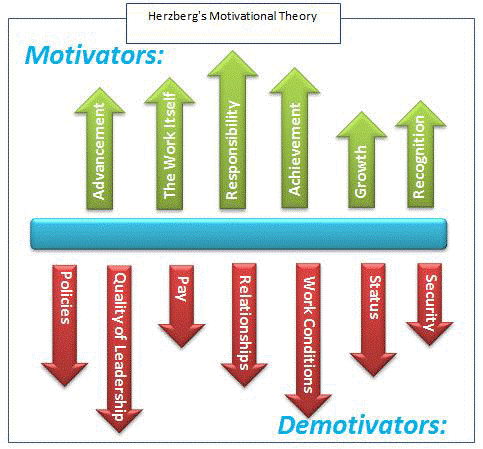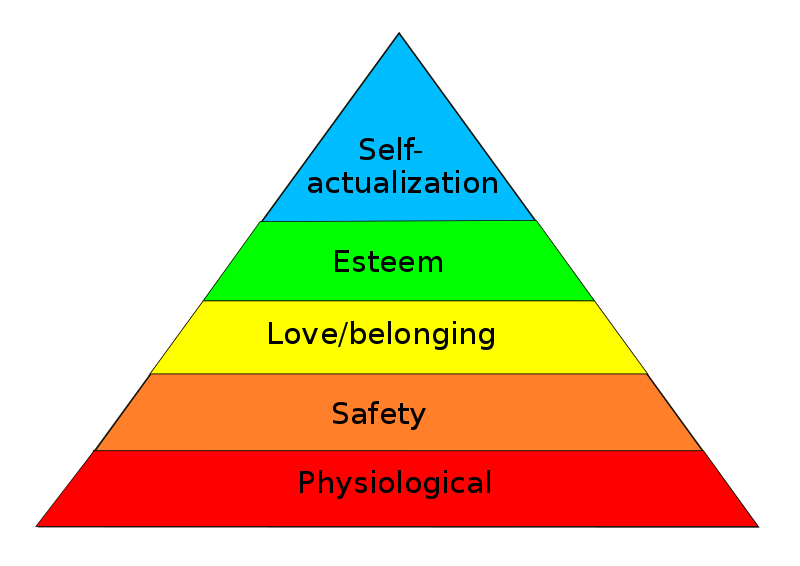INTRODUCTION
In the order to define organisational behaviour in A W Holding Company Limited, there are many factors which influence the organisational behaviour. Such as influences of culture, politics and power. These factors affect the organisational behaviour in positive and negative way as well. It also influence the performance of employees. There are many motivational theories, by which a company can motivate their employees and increase their level of productivity. These motivational theories help in to achieve effective achievement of goals and get better outcomes. Theories of motivation such as Maslow's theory, herzberg theory, theory of x and y, incentive theory and there are many other factors which motivate the employees. Furthermore, there are several characteristics which makes an effective team opposed to the ineffective team(Nortilli and Wong, 2014. ). Group development theory is also provided support to make an effective team. There are also many stages in this theory which should be considered. Concepts of organisational behaviour also influence the behaviour of employees. It influences in negative and positive manner. There are many types of culture in an organisation such as Normative culture, Pragmatic culture, Academy culture, Baseball team culture, Club culture, Fortress culture and Tough guy culture.
TASK 1
P1 Impact of culture and power of the organisation on individual behaviour
Power and politics play an important role in the organisation. The impact of culture and politics is depending on the taking power of employees as whether they use positive or negative power to influence others. Politics affects the productivity and culture of workplace in an organisation directly. Power and politics can be divided into two parts such as positive and negative.
- Positive types of power: positive power affects the productivity in a positive way. It encourages the productivity of an organisation. This type of power builds confidence of employees and motivate them to gain more profit((Nortilli and Wong, 2014. )). It gives the power to take and make decision and to implement them. Employers rewarded the employees for their strong performance which motivate them. At the last, organisation gain a higher rates of employee retention due to express work together team.
- Negative types of power: this type of power generate due to disrespect of employees by leaders. They do not motivate them. Threat of punishment is always exist in this type of power. Thus, quality of products and efficiency of productivity decreases. Leaders motivate the employees by threatening them(Waterson, 2017.).
- Positive workplace politics: if a leader of the company turns the complexity of political culture in an easier way for the employees then it will be influence them in a positive manner. It also provide helps to encourage the productivity. It will be easy for the employee to find out the best of their need by developing a clear policies and chain of communication. Employees will spend more time to increase the efficiency of productivity.
- Negative workplace politics: if an organisation develop a negativity environment and culture of conflicts among employees then at the last, company will faces the problem of decreasing level in productivity and higher rates of turnover. If a leader do not develop the chain of communication and do not develop a clear policy then employees will not spend their time on productivity due to spending time on finding answers of their need and solving problem((Nortilli and Wong, 2014. )).
There are many types of culture in an organisation of A W Holding Company Limited which influence the performance of an employee. Such types of cultures are:
- Normative culture
- Pragmatic culture
- Academy culture
- Baseball team culture
- Club culture
- Fortress culture
- Tough guy culture
Organisation culture means an atmosphere of sharing beliefs and practices among employees. Organisation cannot be completed without organisation culture(Waterson, 2017.).. This is also can be divided into two parts such as positive culture and negative culture. Positive culture means an environment where employees are sharing their beliefs and thoughts with others and they gain positive outcome. It will help in achieving the mission and goal of an organisation. In the other hand, negative corporate culture will increase a large group of dissatisfying level and unhappiness(Kumar, and Sundareshan,2015.). There are three main issues in culture of an organisation like ethics, leadership behaviour and diversity of employees. Culture is changed due to these condition like economic crises, technological changes, global competition, social development, changes in policies and regulations and demographical tends. These all factors affect the individual behaviour in a strong manner. Impact of positive culture are:
- Goals are achieved on time
- Team work environment
- Friendly environment
- Shared values and beliefs
Impact of negative culture are:
- Ego clashes
- Work individually
- Conflicts environment
- Goals are not achieved on time
If a company wants to get advantages of culture then it is necessary to understood old culture first. Leader should recognise the characteristics and impacts of cultural changes. They should help the employees to create positive culture among employees(Waterson, 2017.). Communication chain must be effective and easy. All employees should communicate their ideas and beliefs with others. Organisational culture can be defined in this following manner:
- Detail oriented
- People oriented
- Outcome oriented
- Innovative culture
- Team oriented
- Aggressive culture
- Stable
If a culture of the organisation is proper and easy to understand than performance level of employees will be high and vice versa, performance level of employees will be low. At the last, Impact of culture and policies or power of an organisation influence the individual and team behaviour of A W Holding Company Limited.
Also, you can get our coursework writing help to excel in your academics and lay a strong foundation for your future endeavors.
TASK 2
P2 Motivate individual and teams in A W Holding Company Limited
To motivate individuals and team to achieving goal on time, goal setting theory is the best theory of motivation. The first step in the goal setting theory is to set smart goals. SMART refers to:
S: specific
M: measurable
A: aggressive
R: realistic
T: time bound
SMART goals help the people to achieve the goal and results(Kumar, and Sundareshan,2015.). There are many other motivation theories to motivate employees such as Herzberg's motivational theory, Maslow's theory, theory of X and Y. Herzberg theory of motivation can be understand by this diagram :

To motivate the employees in an organisation, the first step is to must understand that what actually motivates them. What kind of sources motivate and inspire them. Many of the sources available in the organisation which can be affect employees such as:
- Stimulating work
- Promotion
- Feeling of being a part
- Learning
- Achievement
- Ability
These all factors may affect and influence the employees to do more. The other main theory of motivation is Maslow's theory which is created by Maslow. He explain the different level of motivation range from the consumers or employee's needs and requirements. He explained that all the employees are motivated in through several motivation level. Such as:

Maslow explained that employees will motivate for the next stage only when his first level is achieved(Kumar, and Sundareshan,2015.). As levels will be achieved, employees will be motivated to get more. There are various ways to motivate the employees such as:
- By showing confidence
- By rewarding them
- By providing opportunities
- By giving them decision making strength
- By helping them to contribute their ideas
- Encourage their attitudes
- Empowerment
- By encourage a togetherness
- By job satisfaction
By eliminating the factors of dissatisfaction can be also a part of motivation. To get great outcomes and results, each leader should be motivate their employees .there are many effective ways to motivate them such as:
- By sharing the vision with all the members: if everyone in the organisation will know the vision and goal of what to do to get them, efficiency of productivity will be increases. But it is necessary to continuously communicate with all the employees regarding to their activities and goals.
- By appreciated: all employees need of being appreciated. In some times, appreciation is much better reward than money(Kumar, and Sundareshan,2015.).
- Support new ideas:
- By giving challenging task
- Encourage creativity
- Giving opportunity
- Empowering
- Support
- Managing
- Healthy competition
- Good working environment
- Team spirit
One other theory of motivation is McGregor's theory of x and y model. He explained that there are two ways of motivating the employees. If a company is using theory x, then it will be definitely failure company and a company who is using theory of y will be successful company. Because theory y provides a better performance and results. Theory x is associated with following points :
- the average person dislikes work
- threat of punishment
- avoid of responsibility.
The incentive theory is also one of the best theory of motivation. It explained that people are motivated though external rewards. This is similar to operant conditioning theory. Drive theory of motivation explained that people are motivated by reducing the internal tensions. Internal tensions papered cause of unmet needs. According to Maslow's theory, the first level of motivation is physiological, then safety, then love/belonging, esteem and self actualization. First stage is the bottom level of pyramid. Before going to another level, needs of first level should be accomplished. In this level, all the factors are naturally generated. Second level of pyramid is safety(Kumar, and Sundareshan,2015.). It includes factors such as security of a body, morality and family. The third level is love/belonging, when above two stages will be accomplished, then this third level will be generated. In this level, person wants to spend their lot of time with close one. Fourth level of pyramid is the esteem level. Factors included in this level are self esteem, respect, confidence and achievement. These factors can take time to be accomplished compare to the other three level. The last one is self actualization. These theories provide information that how will a company can satisfy their employees. Before starting motivation process, it is necessary to identify the factors which influence the factors related to the employees. According to the theory of behavioural, there are four components which affect the employees:
- need
- efforts
- to achieve goal
- to obtain reward
- degree of satisfaction
employees do their work to met their needs and achieve goals. A company can analyse one of them motivational theory and apply it on their employees. Company will definitely achieve motivated employees and reach their goal with better outcomes.
TASK 3
P3 Distinctions between effective and ineffective team
There are some characteristics which make an effective team such as :
- clear objectives
- balanced roles
- effective process
- good communication
- appropriate leadership
- support and trust
- openness and conflict
- mutual co operation
- individual development
- inter group relations
- regular review
the team must be a real team with clear understanding of purpose and norms of conduct. The first characteristics which makes an effective team is the establishment of clear objectives. Second is result driven structure(Kumar, and Sundareshan,2015.). Third is the team effectiveness. A company can also use the group development theory to make effective team. There are five stages of group development such as: forming, storming, norming, performing and adjourning.
Forming : this stage includes several factors such as :
- group come together on their initial level
- period is fixed by uncertainty
- maintenance
in forming stage, employees determine their places in a business. They are more independent and oriented. They coordinated with workshop, provide to-do lists, review the mission, review the purpose and talk about the management are the factors of forming(Christina, and et.al., 2014.).
Storming : it includes several aspects such as : provide meditation resources, discussion on the issues, review the roles of officer, develop a team activity and conduct a group decision making activity. Characteristics of effective and ineffective team can be explained in this manner :
|
|
Effective team |
Ineffective team |
|
informations |
Open honest and full sharing |
Horizontally and incomplete |
|
relationship |
Trusting and supportive |
Competitive and suspicious |
|
conflicts |
Helpful issues and not personally |
Avoided Destructive and frowned on |
|
atmosphere |
Participative and non-threatening |
Guarded and closed group |
|
decisions |
Full commitment and by consensus |
Forcing and dissonance |
|
creativity |
Solution oriented |
Emphasis on activity |
|
Power base |
Contribution on team |
Contribution to power source |
|
motivation |
Needs satisfied and commitment toward goals |
Concern for the group |
these are the characteristics which makes an effective team better than ineffective team. Group development theory is the best theory to support the development of an organisation.
TASK 4
P4 Applying techniques of organisational behaviour in A W Holding Company Limited
Organizational behavior means an impact of organization on the consumer or employees behavior(Kumar, and Sundareshan,2015.). This impact improves the efficiency of productivity in an organization. In concept of organizational behavior, there are three levels of analysis such as :
- individuals and organizations
- value centered science
- study of people at work
Organization: organization means a place where two or more people get together to achieve goals of an organization. It is necessary to identify the types of organizational behavior in the work place. Types are managerial control, ethics, accountability and harassment.
Managerial control: it is the complex part of organizational behavior. There are different level of managerial control such as : autocratic control and interactive control. Types of managerial control depend on the organization structure and it affects maintain policy(Christina, and et.al., 2014.).
Ethics: ethics also affect the organization behavior in the workplace. Company requires to considering all the factors which may affect the ethics of an organization.
Accountability: structure of an organization helps in maintain the behavior of accountability. If a company do not have accountability for success than it may reduce the efficiency of productivity and there will be fewer chances of getting better results or outcomes(Kumar, and Sundareshan,2015.). Employees are accountable for their works and responsibility because company knows that who is responsible for which work.
Harassment: it is a negative organizational behavior. Leader of a company must address about this harassment in the training period and policies of a company. Harassment means an unwanted thing which is conduct between two or more employees. Some example of harassment are :
- sexual
- physical
- metal
- age discrimination
It is necessary to train the employees on how to deal with this negative organizational behavior. Importance of organizational behavior :
- define organizational behavior
- describe different types of behaviors
- define company culture
- motives
- driving forces
- management
Effects of organizational structure on the behavior of employees can be in different ways. Various types of structure affects the behavior in various aspects such as Functional, it is the structure characterized by a hierarchy system(Kumar, and Sundareshan,2015.). There is a system of top to down power. People work together according to the functions, team, divisional, matrix, other conflicts. Management and organization, these both are the factors which affects each others. The main topics of organizational behavior is Employee productivity, this is directly affected by organization and management behavior. Employee safety, employee training and engagement are the main topic under study of organizational behavior. Organization behavior is combination of organization and behavior. Study of human resource and performance in an organization is organizational behavior in A W Holding Company Limited. This provides two sets of tool such as:
- To understand the behavior of employees
- To improve the behavior of employees by applying new strategies.
Characteristics of organizational behavior are it is goal oriented, human tool, it is a systematic approach, there are many levels of analysis(Christina, and et.al., 2014.). Challenges and opportunities for organizational behavior are :
- responding to globalization
- Managing workforce diversity
- improving productivity
- improving quality
- respond to shortage of labor
- improving customer service
Basically organizational behavior involves three stages such as individual level, group level and organization systems level. There are two types of variable in OB model such as dependent variables and independent variables. Dependent variables includes productivity, absenteeism, turnover and job satisfaction. Elements of organizational behavior are people, job relationship, technology such as machinery and environment includes government, competition and social. Origins of OB can be divided into several aspects:
- psychology
- sociology
- social psychology
- anthropology
- political science
According to the responding to the globalization, it involves many factors such as working with employees who are from different cultures, increasing foreign assignments, cost of labor, and capitalization. According to the workforce diversity, it involves demographics, embracing diversity and implications of managers(Christina, and et.al., 2014.).
CONCLUSION
It can be concluded that, the concept of organisational behaviour in A W Holding Company Limited is depending upon the power, culture and behaviour. This report covered different methods of identifying the impact of environment on its organisation. There are also various types of motivational theories explained, by which a company can motivate their employees to get better achievement of goal. Organisational behaviour concept involved two main factors such as organization and behaviours. Employees behaviours depend on the attributes and attitudes of each others. There are many characteristics described which distinct the ineffective team and effective team. Company will get to know that how can they motivate their employees. Concept and philosophy of organisation behaviour is also explained which include both areas such as organisation and behaviour. Negative impact of factors can be controlled and positive impact of factors must be increased. Because negative factors reduces the efficiency of productivity and positive factors increase the efficiency of productivity. Motivational techniques are able to achieve goals of an organisation. There are many techniques and methods which can be used by organisation according to their preferences and requirements. If an employee will be satisfied then they will spend more time on their work place to achieve more profitability. Organisational behaviour is a vital area which includes all the activities which is done in an organisation.
REFERENCES
- Christina, S. and et.al., 2014. How organisational behaviour and attitudes can impact building energy use in the UK retail environment: a theoretical framework. Architectural Engineering and Design Management, 10(1-2), pp.164-179.
- Coccia, M., 2014. Structure and organisational behaviour of public research institutions under unstable growth of human resources. International Journal of Services Technology and Management, 20(4-6), pp.251-266.
- Cross, C. and Carbery, R., 2016. Organisational Behaviour: An Introduction. Macmillan International Higher Education.
- Kitchin, D., 2017. An introduction to organisational behaviour for managers and engineers: A group and multicultural approach. Routledge.
- Kumar, S .A. and Sundareshan, V., 2015. Organisational Behaviour and Motivation Impact on Employee Performance. ITIHAS-The Journal of Indian Management, 5(4).
- Nortilli, A. and Wong, K.C., 2014. A case analysis of the organisational behaviour of ryanair and its impact. Journal Contemporary Management, 3, p.73.
- Pandey, S., 2016. Theoretical Controvercies in Organisational Behaviour. The Indian Journal of Social Work, 55(2), pp.213-219.
- Taylor, S.P., 2018. Organisational behaviour, leadership and change. International Journal of Housing and Human Settlement Planning, 4(1), pp.21-36.
- Waterson, P., 2017. Patient Safety Culture and Organisational Behaviour. In Patient Safety Culture (pp. 70-93). CRC Press.



 Company
Company


















